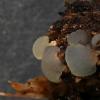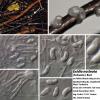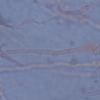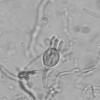
20-12-2025 23:08
Patrice TANCHAUDBonsoir, récolte sur sol sablonneux dans l'arri�

20-12-2025 15:47
Mirek GrycHi.These grew on pine wood that was heavily covere

18-12-2025 21:17
Pol DebaenstThe identification took me to Byssonectria deformi

15-12-2025 07:09
 Danny Newman
Danny Newman
indet. Rutstroemiaceae sp. on unk. fallen leavesMc

19-12-2025 10:10
Patrice TANCHAUDBonjour, récolte réalisée en milieu dunaire, a

18-12-2025 17:23
 Bruno Coué
Bruno Coué
Bonjour,je serais heureux d'avoir votre avis sur c

18-12-2025 18:07
Margot en Geert VullingsThese plumes were found on rotten wood.They strong

17-12-2025 18:35
 Michel Hairaud
Michel Hairaud
Bonjour à tous/Hi to everyone I am passing along
Gelatinous hyaline discs (Exidia ?)
Stephen Martin Mifsud,
27-11-2017 17:09
 Dear friends, I have come across what I believed to be an ascocarp but after microscopical investigations, I don't what it is composed of!!!
Dear friends, I have come across what I believed to be an ascocarp but after microscopical investigations, I don't what it is composed of!!!The bodies were jelly-like and very difficult to slice, hyaline or slightly pulverous above, astipitate, cushion-like bodies sitting on the surface of a decaying twig, sometimes coalescing to form colonies. Some individuals had a pale ochraceous granule at the centre which under the microscope seems to be abiotic and disintegrate into amorphous particles
When finally I sliced a section, I could see a meshwork of numerous 'hyphae' without any special reproductive organs. No spores could be detected.
Is it an Exidia?
Sliced section shows a central amorphous body suspended in a loose gelatinous tissue composed of loose hyphae in a meshwork network (very thin - 1um ) and an outer layer made up of a different denser tissue, but without any special organs (eg asci)
Lothar Krieglsteiner,
27-11-2017 17:13

Re : Gelatinous hyaline discs (Exidia ?)
Hello Stephen,
although the micros are very small, I am quite sure that your fungus is not an ascomycete but a Heterobasidiomycete.
Best regards, Lothar
Chris Yeates,
27-11-2017 17:30
Stephen Martin Mifsud,
27-11-2017 18:17

Re : Gelatinous hyaline discs (Exidia ?)
Dear friends,
I agree perfectly - I just examined better the slide and although I could not see the spectacular basidia of this genus, there are 'basidioles' which are matching with those of Exidia sp. The central calcium oxalate deposit is typical of Exidia nucleata:
http://cemachampi.blogs.sudouest.fr/archive/2014/02/20/etude-exidia-nucleata-une-exidie-a-concretions-d-oxalate-de-1017337.html
I washed the specimen in KOH and maybe I washed away the spores from the surface. I'll prepare a slide from a raw specimen. COOL!














